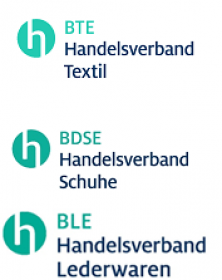Cinte Techtextil China 2025 returns with debut zones
From 3 to 5 September, Cinte Techtextil China will return to the Shanghai New International Expo Centre, with new features capitalising on market growth. In addition to its regular European Zone, the upcoming edition will launch two product zones, namely the Medtech & Protech Zone and the Mobiltech Zone, alongside other precisely crafted features.
With innovation and sustainability at its heart, the fair’s fringe programme will include events such as Econogy Talks, an innovative product showcase and other themed conferences and presentations, maximising promotion and information exchange between fairgoers.
“As the largest global organiser of textile trade fairs, pairing the strength of Messe Frankfurt’s Texpertise Network to market needs as global economies evolve, is key to Cinte Techtextil China’s long-term growth,” said Ms Wilmet Shea, General Manager of Messe Frankfurt (HK) Ltd. “These new zones have been created strategically, allowing us to expand on under-utilised opportunities for exhibitors and visitors in high-potential technical textile and nonwoven sub-sectors, as well as steering the industry towards an innovative and sustainable future.”
No longer an initiative but a prevailing commitment, sustainability has opened up new possibilities for technical textile and nonwoven development. Speaking at the 2024 edition, Mr Lin Yang, Sales Department Minister of Nihon Glass Fiber Industrial Co., Ltd. commented: “The sustainability trend has fostered the robust growth of new energy vehicles and in turn the automotive interior material businesses. Under the global eco-trend, green application will become the core development of automotive textiles, with more and more car manufacturers applying functional fibres to make automotive materials more durable, anti-high-energy radiation and so on.”
A few booths away, Mr Denis Wallrafen, Sales Manager of Reifenhäuser Enka Tecnica, also referred to sustainability as “the rule for success”, saying that the company has “developed an innovative, cost-effective method for refurbishing spunbond and meltblown spinnerets without compromising quality, with the same excellent performance of a new spinneret.”
Sustainability and innovation will again be strong focuses for Cinte Techtextil China in 2025, as will its propensity to bridge gaps between Asian and Western markets. Speaking at the previous edition, which attracted nearly 17,000 visits from 77 countries and regions, Mr Kabilen Sornum, Vice President Asia Pacific of Marketing & E-Commerce at Groz-Beckert East Asia said: “As one of the most important fairs for us in China, Cinte Techtextil China covers the domestic market, while we also receive a lot of international visitors here, allowing us to exchange ideas and gain market insights. As China is a very big market, very often we sell directly and indirectly to them during the fair, where all our users come together.”
The fair’s product categories cover 12 application areas, which comprehensively span a full range of potential uses in modern technical textiles and nonwovens. These categories also cover the entire industry, from upstream technology and raw materials providers to finished fabrics, chemicals and other solutions. This scope of product groups and application areas ensures that the fair is an effective business platform for the entire industry.
Cinte Techtextil China will be held from 3 – 5 September 2025.
The fair is organised by Messe Frankfurt (HK) Ltd; the Sub-Council of Textile Industry, CCPIT; and the China Nonwovens & Industrial Textiles Association (CNITA).
Messe Frankfurt (HK) Limited
































